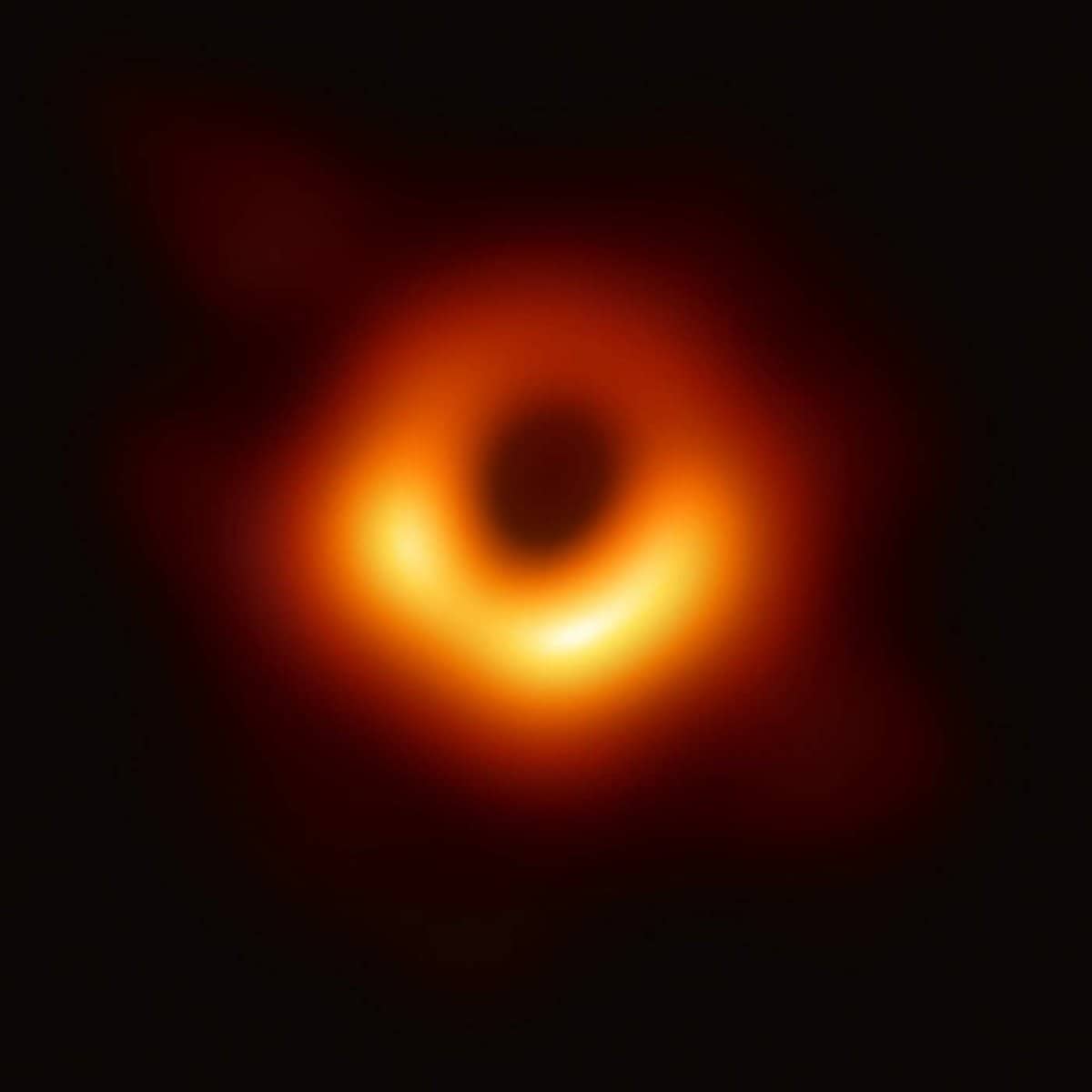"If you enter a black hole, the energy of your mass will come back to our world, but in a distorted form," as famously stated by the renowned British physicist, Stephen Hawking. The Milky Way galaxy is home to an immense number of stars, including our very own Sun, as well as interstellar gas that gives birth to new celestial bodies. Among these extraordinary objects are the enigmatic "black holes." These colossal entities in the universe possess an incredibly powerful gravitational force, allowing them to consume anything within their reach. Their remarkable characteristics also include the ability to warp space and time, rendering them invisible to the naked eye. Surprisingly, time flows much slower in the vicinity of black holes, making them one of the most peculiar phenomena in the cosmos. But how were they initially discovered? What unique properties do black holes possess? And what recent discoveries have scientists made regarding these fascinating entities? All this and more will be explored in our comprehensive article.
Early Mentions
In the early 20th century, Albert Einstein’s theory of general relativity first introduced the concept of black holes. Einstein demonstrated that a powerful gravitational field can cause a distortion in the fabric of space-time, preventing light from escaping the region. This phenomenon leads to the formation of a black hole, an area completely devoid of light.
Who made the initial discovery of black holes and when? The existence of black holes was first discovered in 1763 by the English scientist John Michell. Michell observed that the escape velocity of massive stars exceeds the speed of light, explaining why these stars appear black as their light cannot overcome the force of gravity.
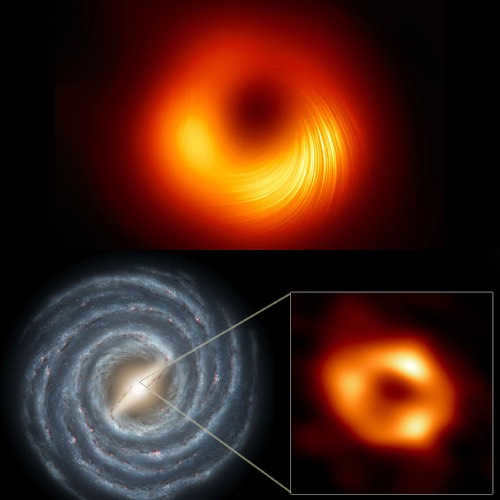
It is common knowledge that initially John Michell’s finding was not taken seriously. The truth is that scientists were already well aware of the wave-like nature of light. As a result, many of them mistakenly believed that gravity could not impede the waves. However, the theory of relativity has proven otherwise. Waves possess energy, which implies they possess mass. Gravity can indeed exert an influence on them. Thus, the saga of the black hole discovery began officially.
Fun fact: John Michell contended that if the Sun were compressed to a radius of three kilometers, an immense gravitational force would be formed, from which even light could not escape.
It is common knowledge that the idea of a “black hole” was initially introduced by American astronomer John Wheeler in 1967. Wheeler coined this term to elucidate the enigmatic entity that arises from the evolution of stars.
In 1971, the existence of black holes was officially confirmed. It was during this period that they were initially observed through a telescope.
From the information provided, we can deduce that a black hole is a space-time region characterized by an immense gravitational pull. Even objects moving at the speed of light, including photons, cannot escape this region. Scientists have referred to the boundary of this enigmatic area as the event horizon.
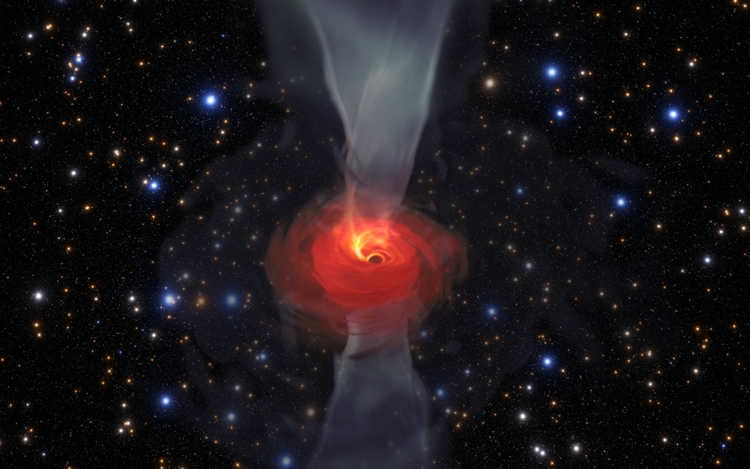
Scientists have discovered that black holes form when stars reach the end of their life cycle. As a star cools down and its thermonuclear fuel burns out, chemical reactions cease and internal pressure decreases. This causes the star to shrink under the influence of gravity, reducing its size and mass. The study of black holes is an ongoing process, constantly uncovering new details.
What are the risks associated with black holes?
Scientists warn about the potential dangers that black holes pose to our planet. It is believed that the gravitational pull of a black hole could disrupt the Earth’s orbit, causing it to either move closer to or farther away from the Sun. Additionally, this gravitational force could potentially lead to a collision between Earth and another celestial body.
Furthermore, scientists suggest that a black hole encountering a dense stream of matter could result in a hazardous scenario. In such an event, the matter falling into the black hole would heat up and emit powerful radiation, capable of devastating the planet’s hydrosphere and atmosphere.
Unique Properties of Black Holes
When exploring the history of black holes, it is important to consider the distinctive characteristics that these entities possess.
Characteristics of Black Holes
One of the primary traits of a black hole is its incredibly powerful gravitational field, which greatly affects the surrounding space and time. Scientific observations have revealed that time flows much slower within a black hole compared to the normal rate. For instance, if an individual were to venture inside a black hole and then return, they would be astounded to find that centuries have passed on the planet while they haven’t aged a day.
Black Holes and their Stellar Neighbors
However, scientists speculate that if an individual were to be situated within a black hole, their chances of survival and subsequent return to Earth would be exceedingly slim. The reason for this being that within this region, the gravitational force is incredibly intense, causing any tangible object to inevitably disintegrate into minuscule fragments.
An intriguing aspect to note is the phenomenon of black holes emitting vapor. This concept was initially broached by the esteemed English astronomer, Stephen Hawking. However, it is important to mention that this phenomenon solely pertains to black holes of relatively diminutive mass. In the vicinity of these black holes, due to the overpowering gravitational pull, pairs of particles and antiparticles are formed. One particle from each pair is expelled outward while the other succumbs to the gravitational force and is drawn inward into the black hole. Observations have revealed that black holes are capable of emitting gamma rays and robust antiparticles. Within the realm of scientific study, this phenomenon is referred to as Hawking radiation.
Recent findings
In March 2023, an extraordinary discovery was made by scientists – one of the most colossal voids in the annals of human civilization. The identification of this remarkable phenomenon was made possible through the utilization of gravitational lensing, an optical effect that occurs when a galaxy refracts light from a more distant object, thereby amplifying its visibility.
During the spring of this year, scientists stumbled upon an immense black hole. Its mass was determined to be a staggering thirty billion times that of the Sun. Astronomers rarely encounter such astronomical proportions. This groundbreaking revelation will undoubtedly be etched into the annals of history, as it marks the first instance of a black hole being detected through the employment of gravitational lensing. According to astronomers, gravitational lensing plays a pivotal role in the identification of black holes. It is through the use of cutting-edge scientific instruments that we continue to unravel fascinating insights about these enigmatic entities.
Thanks to the utilization of the Hubble telescope, it has been revealed that the identified entity is an immense black hole. American and European astronomers have also amassed intriguing information. Researchers have ascertained that within the Milky Way, there exists an abundance of substantial black holes that are situated in close proximity to one another.
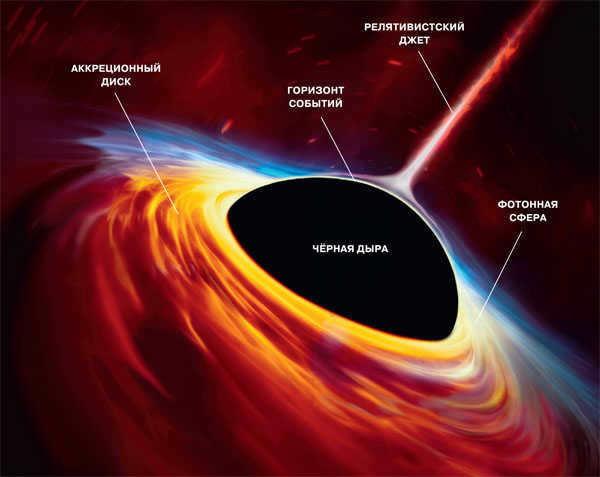
Scientists have performed calculations indicating that enormous stars, weighing between forty and fifty times the mass of the Sun, lose a significant amount of their material during their final stage of life. In many cases, these stars go on to become massive black holes, with a mass thirty times greater than that of the Sun.
Astronomers speculate that there may be thousands of binary black holes within the Milky Way. This suggests that each black hole likely possesses a similar chemical composition. However, experts agree that further research is needed to confirm this hypothesis.
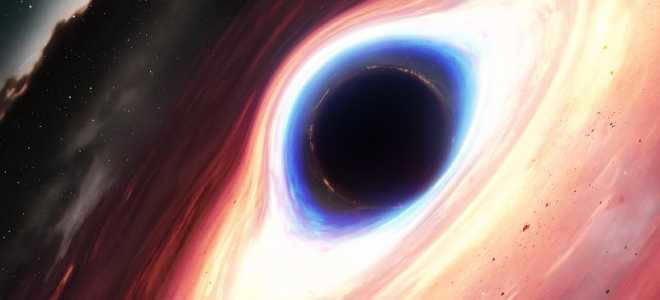
Are you familiar with the concept of a black hole? In reality, there are several astrophysical entities that can be classified as such. Previously, objects like imploding and frozen stars were referred to by this term.
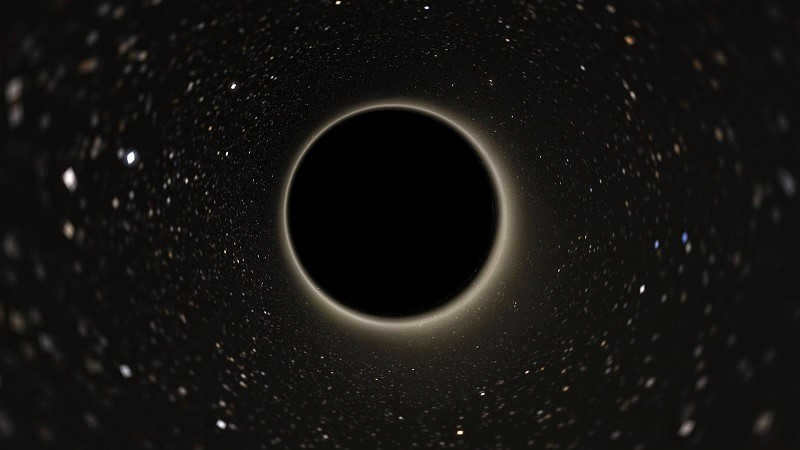
A black hole is a region in space-time where the gravitational pull is incredibly strong, making it impossible to escape its boundaries, even for objects traveling at the speed of light. Additionally, light itself is inevitably drawn into the black hole.
The existence of these regions is derived from the theory of gravity and the general theory of relativity, which provide the best explanation for the formation of these dense and massive astronomical objects.
A brief overview
Although we would prefer to avoid it, scientific terminology is necessary to discuss this topic. The structure we are discussing is extremely intricate and open to interpretation.
Space-time is a conceptual framework that combines the three dimensions of space with the dimension of time, creating a theoretical and physical system known as the space-time continuum.
Specifically in the field of cosmology, space-time unifies the concepts of space and time into a single abstract representation of the Universe.
In the realm of physics, a continuum refers to a continuous medium, which can be understood as a system with an infinite number of internal coordinates of motion or degrees of freedom.
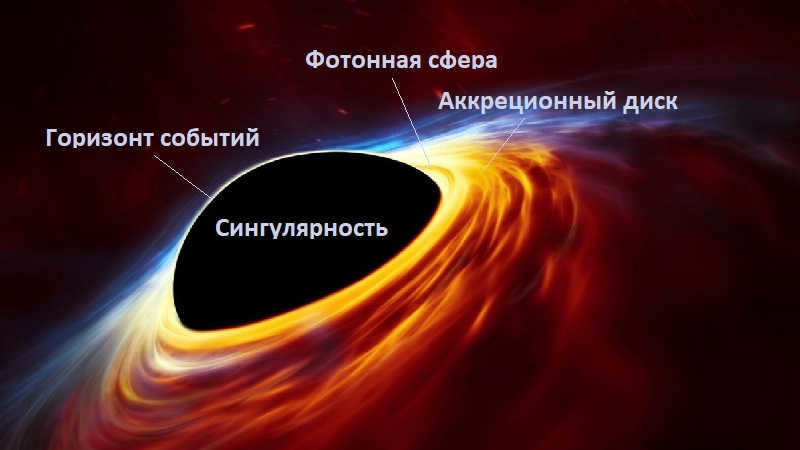
It is intriguing that a black hole possesses this remarkable characteristic of being a gravitational singularity.
Due to the inability to trace a straight path within it and the curvature it experiences upon entry into the region, the quantities describing the gravitational singularity become undefined and infinite.
It is important to note that the black hole singularity is concealed by the event horizon.
Moreover, the event horizon of a black hole serves as its hypothetical boundary. These boundaries mark the point beyond which nothing can escape. One could liken them to one-way doors.
Therefore, a black hole has the ability to attract and pull in any nearby or approaching objects due to its strong gravitational force. However, once these objects cross the event horizon, they are unable to escape back out. It is worth mentioning that even sunlight, which enters the black hole, is unable to break free. As a result, black holes cannot be observed since they do not emit any visible light, leaving only darkness in their vicinity.
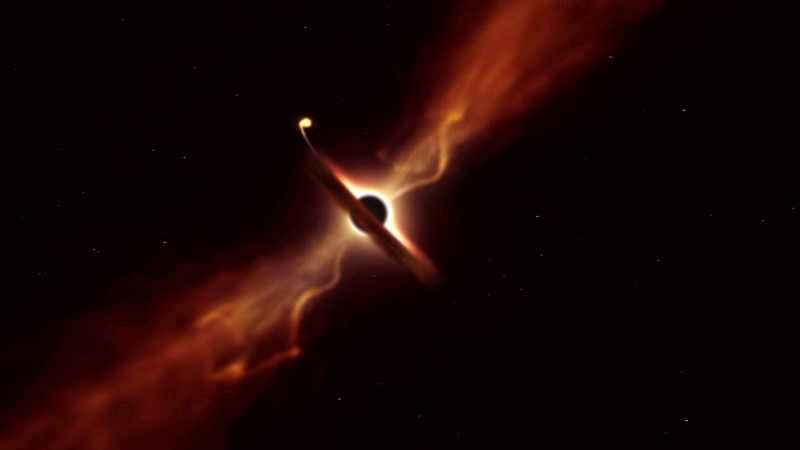
What is a black hole in space in simple terms
It is widely believed that a black hole is a void in space from which nothing can escape.
In reality, these regions are a profound enigma to us, as we possess limited knowledge about them. It is plausible that they are not merely conglomerations of matter, but rather powerful aggregations of gravity.
Essentially, a black hole can be likened to a spatial void. Alternatively, it is conceivable that an individual black hole serves as a gateway to another universe or a different period in the same universe.
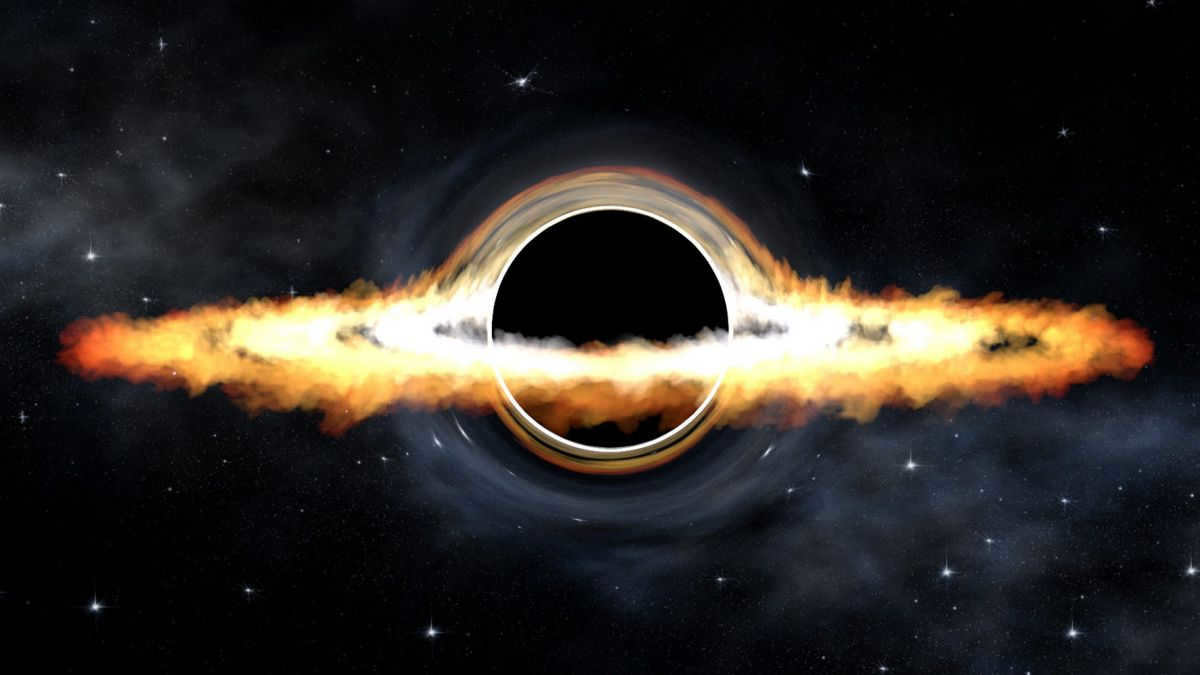
Black holes are a fascinating phenomenon in the cosmos. These celestial entities possess an incredibly powerful gravitational force that nothing, not even light, can escape from.
Objects that enter the event horizon, the boundary where a black hole’s escape velocity exceeds the speed of light, are propelled towards an unknown destiny.
In recent times, scientists have made numerous groundbreaking discoveries regarding black holes. Some of these findings have paved the way for future research, while others continue to astound researchers. Below, we present 18 captivating facts and theories about black holes that you should be aware of.
1. Karl Schwarzschild made the groundbreaking discovery of the black hole in 1916

Back in the 18th century, there were discussions about objects with incredibly strong gravitational fields that even light couldn’t escape from. However, it was Karl Schwarzschild who provided the first modern solution to the general theory of relativity in 1916, effectively defining what we now know as a black hole.
In 1958, David Finkelstein presented his interpretation of a black hole as a region of space that nothing can escape from. Later, American theoretical physicist John Wheeler associated the term “black hole” with objects that result from gravitational collapse, as predicted in the early 20th century.
Wheeler first used the term “black hole” during a presentation at NASA’s Goddard Institute for Space Studies in 1967.
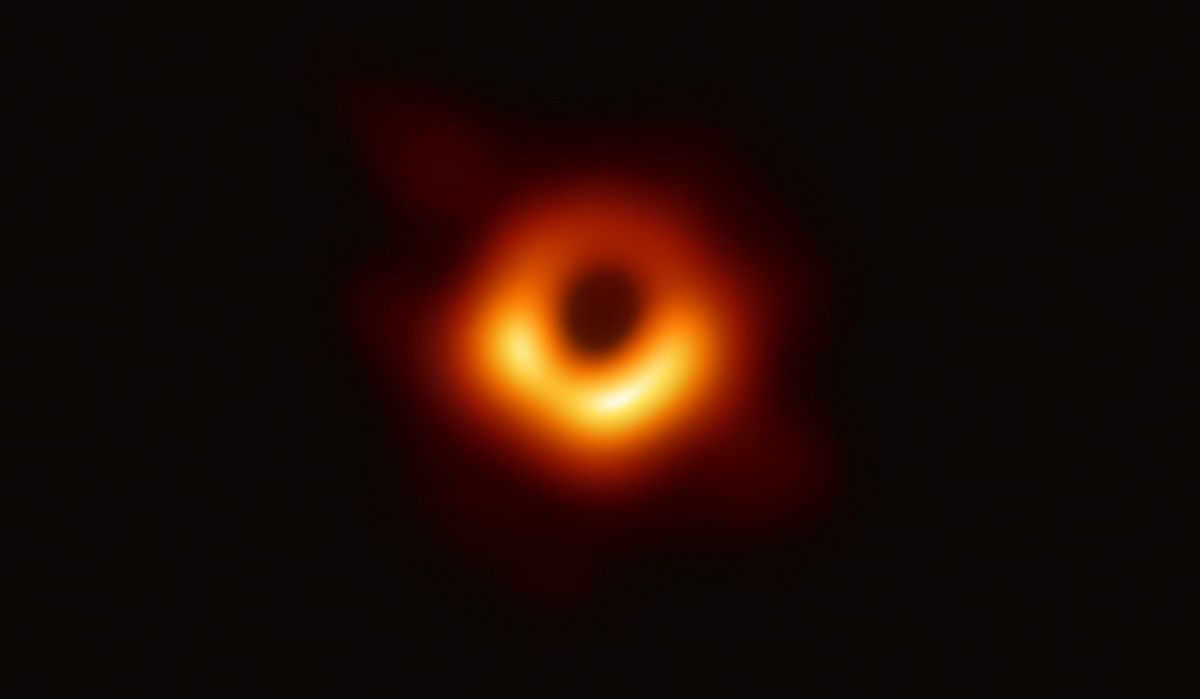
The first-ever photograph of a black hole located in the core of the elliptical galaxy Messier 87
Due to the immense gravitational force of a black hole, light cannot escape it, making direct observation impossible. However, the impact of its gravity on nearby celestial bodies and gas can be observed.
Astronomers examine the movement of stars to determine if they are orbiting around a black hole. When a star and a black hole are in close proximity, radiation is emitted, which can be detected by space telescopes and satellites.
In 2019, scientists successfully captured an image of a black hole located 500 million trillion trillion kilometers away. This remarkable photograph was taken by a network of eight telescopes positioned across the globe. The supermassive black hole measures 40 billion kilometers in width and possesses a mass 6.5 billion times that of the Sun.
3 Categories of black holes
There are four categories of black holes (three actual and one hypothetical) -.
Stellar black holes: these are compact black holes with masses ranging from 5 to a few tens of solar masses. They are created through the gravitational collapse of a massive star.
Supermassive black holes: the largest black holes with masses ranging from hundreds of thousands to billions of solar masses. The origin of these black holes remains a topic of ongoing research.
Intermediate black holes are significantly more massive than stellar black holes, but smaller than supermassive black holes. The most compelling evidence for the existence of these celestial bodies comes from certain low-luminosity active galactic nuclei.
Primordial black holes are theoretical black holes that may have formed shortly after the Big Bang. Their masses could potentially be much smaller than the masses of stars. Stephen Hawking extensively studied these black holes and determined that they can have a weight as little as 100 micrograms.
4. A black hole consists of three layers
A black hole is composed of three layers: the singularity, the outer event horizon, and the inner event horizon.
The singularity is located at the center of the black hole. It is the region where all mass is compressed to an almost zero volume. As a result, the singularity possesses an incredibly high density and generates an immense gravitational force.
The outer event horizon is the outermost layer from which materials can still escape the gravitational pull of the black hole. The gravitational force exerted by this layer is not as strong as that of the central or inner layer.
The central layer of a black hole is known as the inner event horizon, and it plays a crucial role in trapping matter within the gravitational pull. This region is where matter is unable to escape and is instead pushed towards the center of the black hole, where the gravitational influence is at its strongest.
5. The size of a black hole can range from as small as 0.1 millimeters
Black holes come in a variety of sizes, with the smallest ones measuring as tiny as 0.1 millimeters. Despite their small size, these black holes can still have a mass comparable to the Earth’s moon or even ten billion times the mass of the Sun.
The mass of a black hole is directly proportional to the size of its event horizon, which is determined by its Schwarzschild radius. This radius represents the point at which the escape velocity is equal to the speed of light.
It’s important to note that no black hole can be infinitely small. In fact, there is a minimum mass requirement for a black hole, which is equal to or greater than the Planck mass, approximately 22 micrograms.
6. Black holes have rotational motion
When a star collapses into a small volume, its mass remains intact. In order to conserve momentum, the rotational velocity of the resulting black hole increases.
As the black hole spins, it also causes the surrounding space-time to rotate. This region is known as the ergosphere and is located beyond the event horizon. It is a region where various interesting effects occur.
The smaller the event horizon, the faster the rotation. However, there is a maximum speed at which a black hole can rotate without revealing its singularity to the rest of the universe.
The most massive stellar black hole in the Milky Way, GRS 1915+105, spins at a rate of 1150 times per second. Additionally, the black hole in the galaxy NGC 1365 rotates at 84% of the speed of light. It has reached the cosmic speed limit and cannot rotate any faster.
7. They create noise
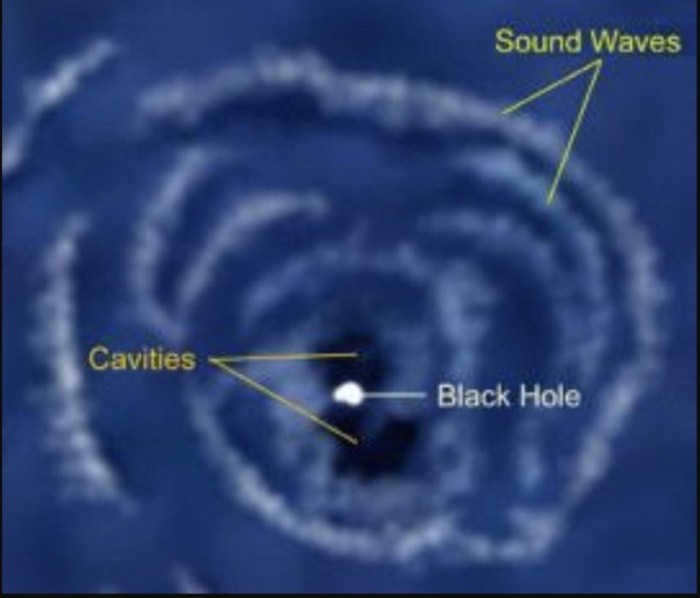
In 2003, scientists using NASA’s Chandra X-ray Observatory made a remarkable discovery – they detected sound waves emanating from a supermassive black hole located 250 million light-years away from Earth.
When a black hole devours matter, its event horizon accelerates the particles to nearly the speed of light, generating sound waves in the process. These sound waves can travel for millions of light-years before being detected by space telescopes.
But how can sound propagate in the vacuum of space? The truth is, outer space is not completely empty. It contains a sparse distribution of hydrogen atoms and other gases, which act as a medium for very low-frequency sound waves.
8. Black holes cause a distortion in the fabric of space and time
As a result of its incredibly powerful gravitational pull, a black hole is able to warp the very fabric of space and time in its immediate vicinity. According to the principles outlined in the general theory of relativity, the closer one gets to a black hole, the slower time appears to pass.
At the boundary of a black hole, known as the event horizon, all matter, including light, becomes trapped and unable to escape. The gravitational force at the event horizon is constant and unyielding.
When a black hole is rotating, an intriguing phenomenon known as frame dragging occurs. In this case, the space and time surrounding the black hole become stretched and distorted. The gravitational forces are so strong that movement in the opposite direction becomes impossible. It creates an infinite loop of distortion where forward motion is unattainable.
Generally speaking, the familiar laws of physics no longer hold true within the event horizon, making it inconceivable for anything to possess infinite density and zero volume.
9. Black holes have the potential to cause gruesome fatalities
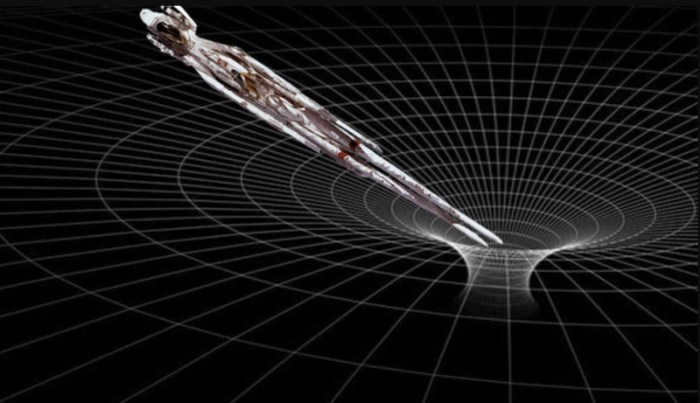
If you were to encounter a small black hole, the immense tidal force of gravity would cause you to experience distortion. Tidal force refers to the disparity in gravitational force between your head and your feet. Specifically, the force exerted on your head (assuming you were falling headfirst) would be significantly stronger compared to the force exerted on your feet.
This discrepancy would result in a sensation of being torn apart, as if you were being stretched from head to toe. The proximity of your head to the black hole would cause it to move at a faster rate. On the other hand, the lower half of your body would be further away and therefore not move towards the center as rapidly.
10. Black holes do not pull you into their gravitational field
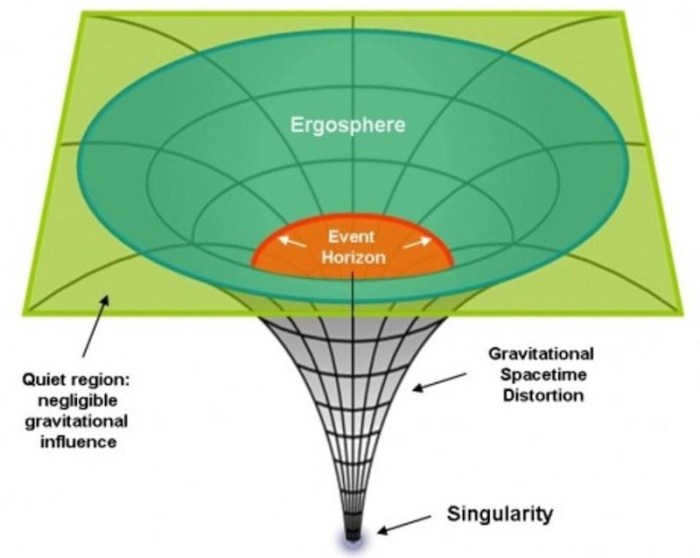
Many people often mistakenly view black holes as cosmic vacuums that draw matter in from their surroundings. However, this is not an accurate understanding. Black holes are similar to other celestial bodies, but they possess an immense gravitational force that affects the space in their vicinity. As a result of this gravitational force, the matter in their surroundings experiences rapid acceleration.
Even if we were to replace our Sun with a black hole of the same mass, the Earth would not plummet. The black hole would have an equivalent gravitational field to that of the Sun. Thus, the Earth and other planets would continue their orbits around the black hole, just as they currently orbit the Sun.
Furthermore, due to its size, the Sun will never evolve into a black hole.
11. The centers of most galaxies are home to supermassive black holes

Scientists hypothesize that the majority of galaxies, including our own Milky Way, are anchored by a supermassive black hole at their core. These colossal black holes play a crucial role in maintaining the integrity of galaxies in the vast expanse of space.
One such black hole, known as Sagittarius A, resides at the heart of the Milky Way. With a mass 4 million times greater than that of the Sun, Sagittarius A is located a mere 26,000 light-years away from Earth. This proximity allows astronomers to directly observe the surrounding matter as it is pulled towards the black hole.
In our galaxy alone, there are over 100 million stellar black holes, along with the supermassive Sagittarius A at its center. With nearly 100 billion galaxies, each containing a supermassive monster core and 100 million stellar-mass black holes (with ongoing research on other types), it’s comparable to attempting to tally the grains of sand on Earth.
13. It is possible to transform any object into a black hole
Stars are not the sole entities that can transform into black holes. In principle, any object can be transformed into a black hole.
For instance, if you were to compress the Sun to a diameter of 6 kilometers, while keeping its mass unchanged, it would transform into a black hole. The density would reach astronomical levels, resulting in an incredibly strong gravitational force.
The same principle can be applied to the Earth or any other object, such as a cell phone, a car, or even the human body. However, we are not aware of any technique that can compress the volume to an infinitesimal point while preserving 100 percent of the object’s mass.
14. Eventually, they dissipate
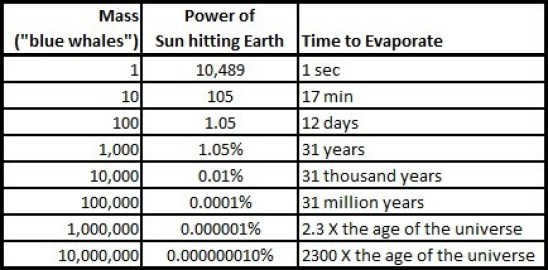
In 1974, Stephen Hawking put forward the idea that black holes release minute amounts of photon particles, which leads to their gradual loss of mass and eventual vaporization. This phenomenon is known as Hawking radiation.
The emission of blackbody radiation is a result of quantum effects occurring near the event horizon. However, due to the extremely slow pace of this process, only the smallest black holes would have sufficient time to fully evaporate within the 13.8 billion-year lifespan of the universe.
There exists a harmonious correlation between the functionality of black holes and the abundance of stars. An excessive amount of stars would result in a galaxy becoming excessively hot for the evolution of life, whereas an insufficient number of stars could impede the formation of life.
A novel investigation demonstrates how supermassive black holes control the process of star formation in immense galaxies. The past occurrence of star formation in neighboring massive galaxies is contingent upon the mass of the central supermassive black hole.
16. They are an enormous source of energy
Black holes generate energy with greater efficiency compared to small stars like the Sun.
Due to the immense gravitational force near the event horizon, matter closest to the edge of the event horizon rotates much faster than matter on the outer event horizon (the outer layer of the black hole).
This matter moves at such high speeds that it heats up to temperatures in the millions of degrees Celsius, converting mass into energy in the form of radiation (referred to as blackbody radiation).
A black hole can convert 10% of its mass into energy. To put this into perspective, nuclear fusion only converts 0.7% of mass into energy.
Scientists have even explored the possibility of harnessing this type of energy to construct power plants or spacecraft.
17. Black holes have the potential to generate fresh universes
It may appear peculiar, but a number of physicists are of the belief that black holes hold the capability to give rise to new worlds. It is possible that our own universe came into existence inside a black hole, and the black holes within our universe could give birth to their own distinct universes.
To comprehend the mechanics behind this theory, let’s consider our existing universe: everything within our sight owes its existence to a chain of past events and a set of conditions that converged to create life as we know it.
Even a minute alteration to those conditions and events could result in a completely different outcome. In theory, a singularity within a black hole could modify these conditions, resulting in the emergence of a new, slightly divergent universe.
18. Information can be preserved despite entering a black hole
For decades, physicists have grappled with the question of what happens to information about particles that pass through black holes.
According to the laws of quantum physics, information cannot be permanently destroyed. However, if information cannot escape from a black hole, it would seem that it has effectively been annihilated, which contradicts the principles of quantum mechanics.
Stephen Hawking proposed a different perspective, suggesting that information never actually enters a black hole.
“Information is not stored within the interior of a black hole, as one might expect, but rather at its boundary, known as the event horizon.” – Stephen Hawking
When an object is pulled into a black hole, its data is acquired and retained at the event horizon. While the object might be obliterated within the black hole, the data will persist in an indistinct manner on the event horizon.
The data might be released through Hawking radiation, albeit in an impractical and disordered state. In reality, it could manifest in an alternate universe. Hawking proposed that black holes are not the everlasting confines they were formerly envisioned to represent.
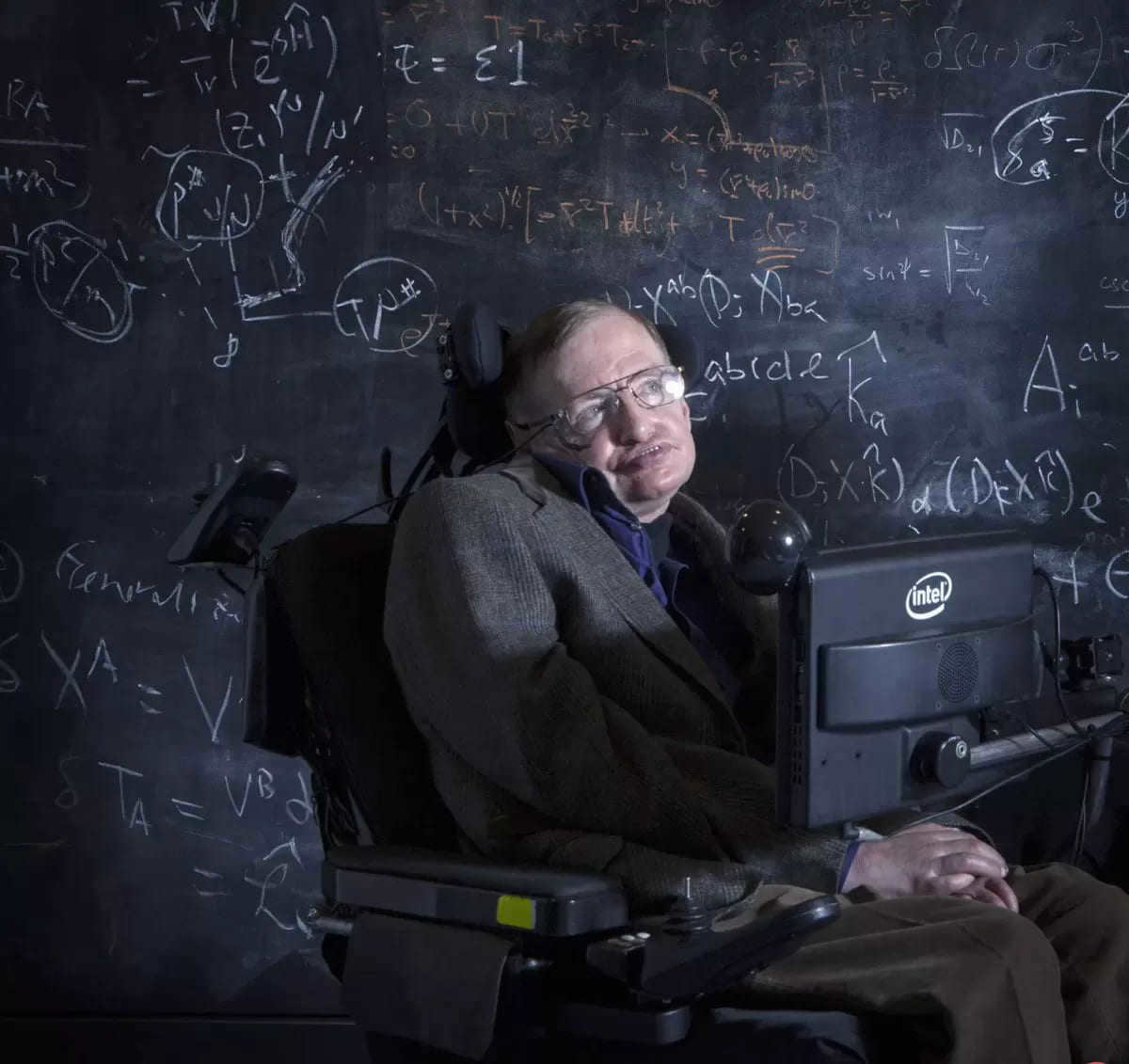
Stephen Hawking, one of the most renowned astrophysicists in history, was born on January 8, 1942 in Oxford. He often emphasized that his birth occurred exactly 300 years after Galileo Galilei’s death. Despite being diagnosed with a progressive muscular atrophy during his teenage years, which eventually resulted in paralysis, Hawking never lost his determination. He challenged the prevailing physics and cosmology of his time, ultimately revolutionizing our understanding of black holes.
“We are an advanced species of primates inhabiting a planet that is smaller than an average star,” Hawking once remarked. “Yet, we possess the capability to comprehend the vastness of the universe, which sets us apart.”
He used a custom-made wheelchair and a computer equipped with a voice synthesizer to interact with society and pursue scientific endeavors throughout his 76-year existence, concluding on March 14, 2018. Coincidentally, this date marks the 130th anniversary of Albert Einstein’s birth. Throughout his scientific investigations, he revolutionized our understanding of the universe, particularly enigmatic celestial entities characterized by intense gravitational forces that prevent light from escaping: black holes.

The beginning of the cosmos can be traced back to a singularity
Stephen Hawking made a significant contribution to our understanding of the universe with his doctoral thesis at Cambridge University. In this thesis, he proposed that the universe originated from a minuscule and densely packed mass of matter that was tightly coiled upon itself, known as a singularity. Similar to a black hole, a singularity possesses an immense gravitational pull that draws in everything around it.
However, this hypothesis has faced considerable debate, primarily due to the fact that the initial matter in the birth of our universe cannot be a black hole if matter is capable of escaping from it. Mathematician John Baez from the University of California has suggested that it could instead be a white hole, which is the complete opposite of a black hole. Unfortunately, there is currently no way to test any of these hypotheses, including Hawking’s, at present.
Hawking radiation
Several years later, Hawking demonstrated that black holes can be considered as black bodies following the principles of thermodynamics. As a result, they possess a specific temperature and entropy that are determined by their gravitational field and surface, causing them to emit subatomic particles. This emission is referred to as Hawking radiation, which ultimately leads to a gradual reduction in the black hole’s mass.
This process occurs due to a purely quantum phenomenon that takes place near the event horizon. In this region, pairs of particles and antiparticles, which are typically produced by quantum fluctuations in empty space, can become separated. While one particle would fall into the black hole, the other would manage to escape instead of annihilating immediately after their creation. As a result, the escaping particle would be detected as radiation, whereas the antiparticle would be absorbed by the black hole.

One of the most fascinating implications of the theory of Hawking radiation is that the black hole will gradually decrease in mass until it completely evaporates (in approximately 10.66 years) as a result of the ejection of particles outside its boundaries.
Black holes are boundless
In 2014, Hawking challenged a fundamental concept of black holes: the existence of an event horizon that serves as an impenetrable boundary. He proposed that the event horizon is not a fixed limit, but rather shifts in response to the behavior of the subatomic particles within the black hole.
The idea of a “floating boundary” for a black hole was formulated in order to address the paradox known as the firewall paradox. This paradox argues that an astronaut passing through the event horizon of a black hole would not perceive anything out of the ordinary because they would be in a state of free fall and not subject to any forces. However, according to the theory of Hawking radiation, there should exist a “ring of hell” within the event horizon that would immolate an astronaut before they could be crushed by the black hole. The notion of an unfixed event horizon was proposed as a means of reconciling these two concepts.
Black holes possess hair
In the beginning, researchers held the belief that black holes were “bald.” This implies that there are no intricate or diverse features present on their perimeters: they are all indistinguishable except for their mass, angular momentum, and rotation.
However, more recently, in 2016, Hawking and physicist Andrew Strominger from Harvard University proposed that black holes possess “hair” in the form of elongated strands comprised of zero-energy particles emanating from their event horizon. The notion is that certain pieces of information absorbed by the black hole may be contained within these elongated “hairs.”
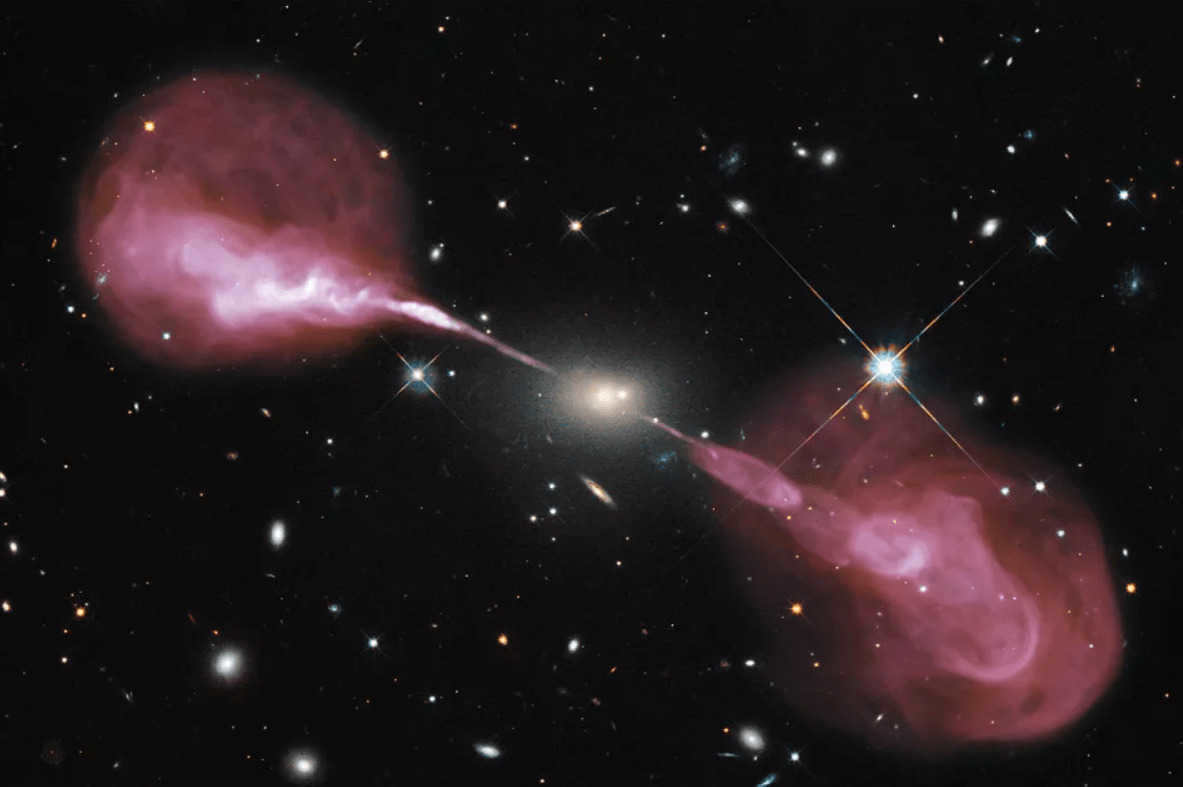
Utilizing Miniature Black Holes for Energy Generation
The most colossal black holes within the cosmos are known as supermassive black holes, situated at the core of galaxies and possessing a mass billions of times larger than that of our Sun. Conversely, the smallest black holes would be approximately ten times the mass of the Sun. Nonetheless, scientists have also hypothesized the existence of even tinier black holes, akin to the size of a mountain here on Earth. Due to their diminutive nature, and as per Hawking’s radiation theory which only permits particles to escape when their wavelength is equal to the black hole’s size, it has been proposed that these miniature black holes could release particles with higher energy levels, thus serving as a viable energy source.
During a lecture delivered in February 2016, the renowned astrophysicist proclaimed:
Stephen Hawking’s numerous unspoken contributions to physics and cosmology will forever be preserved in the annals of human history, handed down from one generation to the next. According to Hawking, the survival of humanity hinges on the colonization of the cosmos, necessitating careful observation, study, and understanding before it can be truly explored. Thus, Hawking’s exploration of the universe, with its enigmatic interplay of darkness, matter, and energy, has secured his place in the annals of history.

In November 1915, Albert Einstein submitted a publication containing the fundamental equations of the general theory of relativity (GTR). Subsequent research revealed that this groundbreaking theory of gravity, which celebrates its centennial in 2015, predicts the existence of black holes and wormholes in space-time. These fascinating concepts will be discussed in detail by “Lenta.ru”.
What is OTO
OTO stands for “Ordo Templi Orientis”, which is a mystical and magical organization founded in the early 20th century. It is based on the principles of equivalence and general covariance, which are central to its teachings.
The principle of equivalence states that there is a proportional relationship between inert mass (related to motion) and gravitational mass (related to gravitation). This principle allows for the possibility that in a limited region of space, it is not possible to distinguish between a gravitational field and motion with acceleration.
A classic example to illustrate this principle is an elevator. When an elevator is moving upwards relative to the Earth with equal acceleration, an observer inside the elevator would be unable to determine whether they are in a stronger gravitational field or simply moving in a man-made object.
The principle of general covariance, as applied to the equations of general relativity (GR), states that these equations remain unchanged under transformations of the special theory of relativity formulated by Einstein and his contemporaries in 1905. The concepts of equivalence and covariance necessitated the consideration of a single curved spacetime in the presence of massive objects. This distinguishes the theory of general relativity from Newton’s classical theory of gravitation, which assumes that space is always flat.
General relativity in four dimensions is described by a set of six partial differential equations. To find the explicit form of the metric tensor that describes the curvature of spacetime, boundary and coordinate conditions need to be specified, as well as the energy-momentum tensor. The energy-momentum tensor describes the distribution of matter in space and is typically connected to the equation of state used in the theory. Additionally, the GR equations can incorporate a cosmological constant (represented by the symbol lambda), which is often associated with dark energy and possibly with a corresponding scalar field.
In 1916, Karl Schwarzschild, a German mathematical physicist, made a groundbreaking discovery in the field of general relativity. He found the first solution to the equations that describe the gravitational field created by a distribution of masses with zero electric charge that is symmetric around a central point. This solution introduced the concept of the gravitational radius, which determines the size of an object with a spherically symmetric distribution of matter that photons, which are particles of light, cannot escape from when traveling at the speed of light.

The Schwarzschild sphere, when defined in this manner, is essentially the same as the concept of an event horizon, with a black hole being a massive object bound by it. The perception of a body’s approach to the Schwarzschild sphere within the framework of general relativity varies depending on the observer’s position. From the perspective of an observer attached to the body, the reaching of the Schwarzschild sphere would occur within a finite amount of proper time. However, for an external observer, the body’s approach to the event horizon would take an infinite amount of time and appear as if it were endlessly falling towards the Schwarzschild sphere.
Soviet physicists also made contributions to the theory of neutron stars. Lev Landau, in his 1932 paper “Towards a Theory of Stars,” made a prediction about the existence of neutron stars. Additionally, in his 1938 publication in the journal Nature titled “On the Sources of Stellar Energy,” Landau proposed the existence of stars with a neutron core.
The process by which massive objects transform into black holes has been explained by theoretical physicists Robert Oppenheimer and his graduate student Hartland Snyder. This explanation, which is widely accepted, was given in 1939. It’s worth noting that Oppenheimer later became the scientific director of the Manhattan Project, which was responsible for the creation of the first atomic bomb in the United States.
In the 1930s, astronomers developed a fascination with the prospect of a star’s future once its nuclear fuel supply had been depleted. For stars of a smaller size, like our Sun, this evolution would result in a transformation into a white dwarf. In this state, the force of gravitational compression is counteracted by the electromagnetic repulsion of the plasma at the star’s core, which is primarily composed of electrons. In the case of larger stars, gravity triumphs over electromagnetism, giving rise to neutron stars. These celestial bodies have a core consisting of neutron liquid, surrounded by a thin plasma layer containing electrons and heavy nuclei.
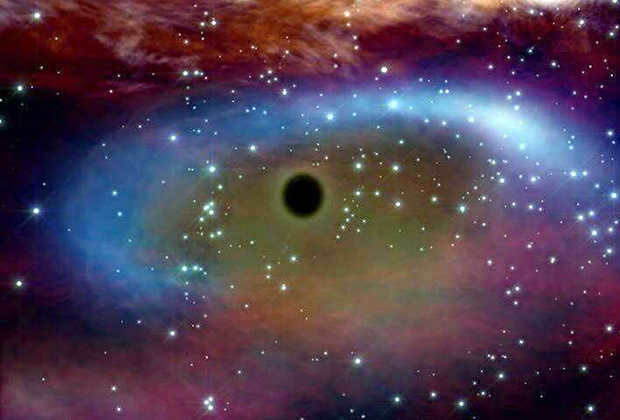
In 1932, the Indian astrophysicist Subramanian Chandrasekar was the first to estimate the maximum mass of a white dwarf that would prevent it from becoming a neutron star. This value is calculated based on the balance between the degenerate electron gas and gravitational forces. Currently, the Chandrasekar limit is estimated to be 1.4 solar masses.
The Oppenheimer-Volkov limit is the upper limit on the mass of a neutron star before it collapses into a black hole. It is determined by the equilibrium between the pressure of the degenerate neutron gas and gravitational forces. In 1939, a value of 0.7 solar mass was obtained, but modern estimates range from 1.5 to 3.0.
Mole hole
From a physical perspective, a wormhole serves as a conduit that links two far-flung areas within the fabric of space-time. These areas may exist within the same universe or act as a bridge connecting points in separate universes (within the context of the multiverse theory). Wormholes can be classified as either passable or impassable, depending on the ability to traverse back through the opening. Impassable wormholes seal shut rapidly, preventing any prospective voyager from making a round trip.

From a mathematical perspective, a wormhole is a theoretical object that arises as a unique solution to the equations of general relativity. Wormholes are often depicted as a curved two-dimensional surface, connecting two points in space. This connection can be traversed by conventional means or through a tunnel. In the case of a two-dimensional space, this allows for a significant reduction in distance.
In the realm of two dimensions, wormholes manifest as circular openings that mark the entrance and exit points of a tunnel. However, when we venture into three-dimensional space, the shape of a wormhole’s neck takes on the form of a sphere. These extraordinary structures arise from the convergence of two singularities located in separate regions of space-time, merging together within the expanse of hyperspace – a dimension of heightened spatial dimensions. The resulting passage, known as a burrow, serves as a conduit not only for spatial travel, but also for temporal traversal.
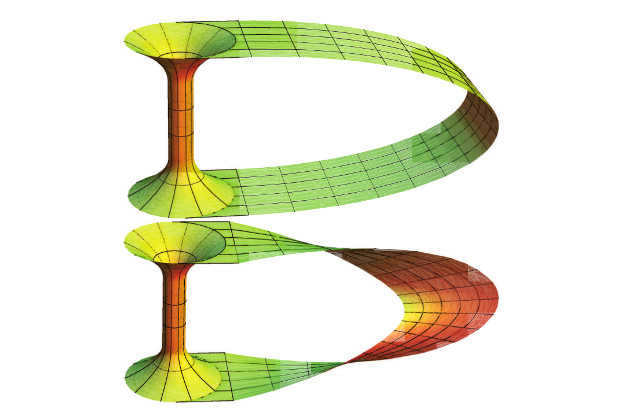
In 1916, Ludwig Flamm provided the first solutions to the equations of General Relativity (GR) that resembled a wormhole. However, his work, which described a wormhole with a spherical neck and no gravitating matter, did not receive much attention from scientists. It wasn’t until 1935 that Albert Einstein and Nathan Rosen, an American-Israeli theoretical physicist, independently discovered a similar solution to the equations of General Theory of Relativity (GTR). Unaware of Flamm’s earlier work, they were motivated by their desire to unite gravitation with electromagnetism and eliminate the singularities present in the Schwarzschild solution.
In 1962, American physicists John Wheeler and Robert Fuller demonstrated that the Flamm wormhole and the Einstein-Rosen bridge have a tendency to rapidly collapse, rendering them impassable. However, in 1986, American physicist Kip Thorne put forth a groundbreaking proposal for a passable wormhole within the framework of the General Theory of Relativity. Thorne’s wormhole is postulated to be filled with a form of matter possessing a negative mean mass density, which serves to prevent the tunnel from closing. Currently, elementary particles exhibiting such properties have eluded scientific discovery, but it is conceivable that they may comprise a component of dark matter.
Gravity in the Modern Era
The Schwarzschild solution provides a fundamental understanding of black holes. However, we have also made significant progress in describing rotating and charged black holes. One of the leading figures in this field is British mathematician and physicist Roger Penrose, who has developed a comprehensive mathematical theory of black holes and related singularities.
As early as 1965, Penrose published a groundbreaking article titled “Gravitational Collapse and Spacetime Singularities” in the journal Physical Review Letters. In this article, he explores the formation of trap surfaces, which ultimately lead to the transformation of a star into a black hole and the emergence of a singularity. A singularity is a point in spacetime where the equations of General Relativity produce physically inconsistent results. Penrose’s work is widely regarded as the first major mathematically rigorous result in the field of General Relativity.

